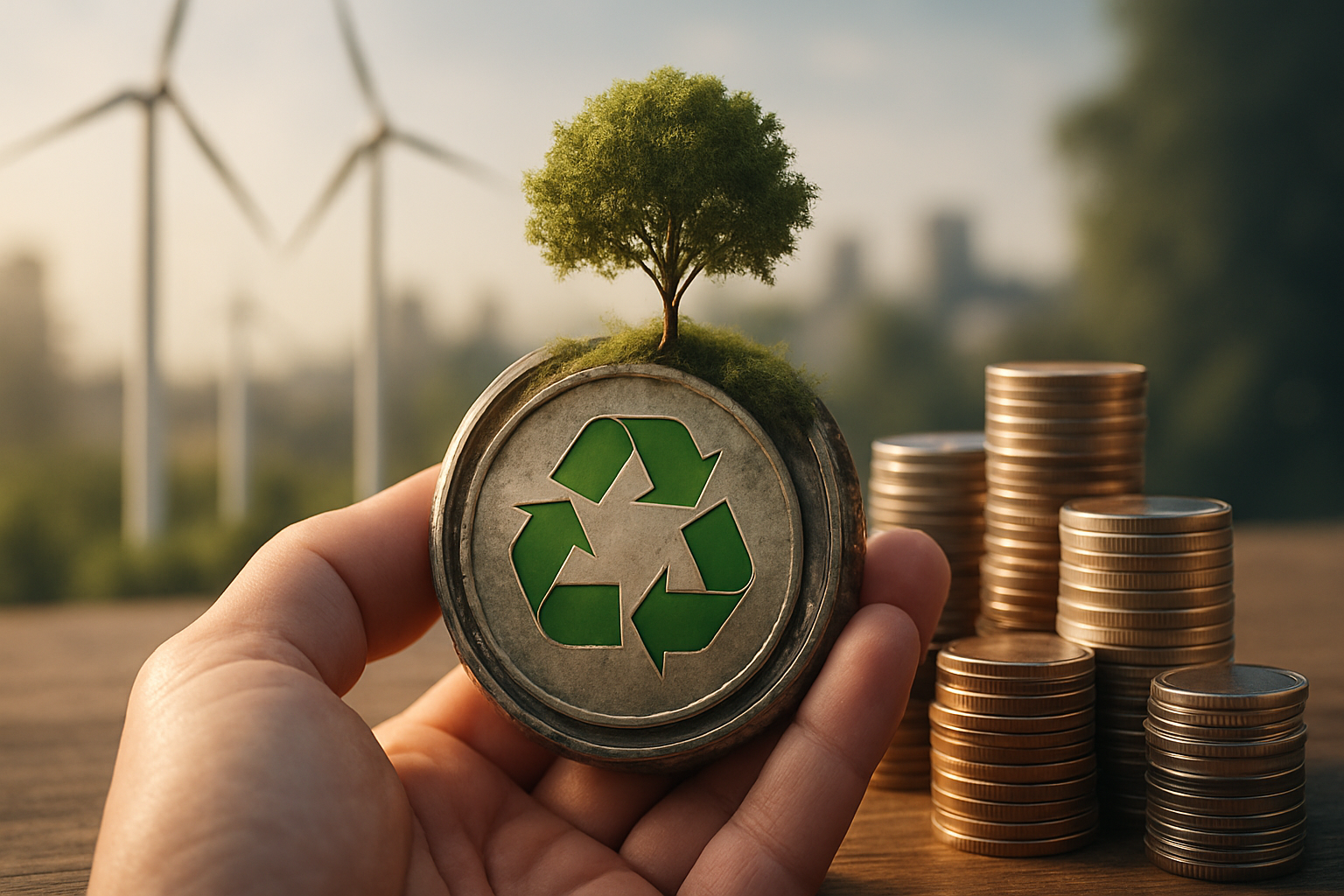Exploring the Circular Economy: A New Paradigm for Financial Growth
In a world grappling with resource scarcity and environmental challenges, the circular economy emerges as a beacon of hope for sustainable financial growth. This innovative economic model promises to redefine our approach to production, consumption, and waste management, offering exciting opportunities for investors and businesses alike.

The Genesis of the Circular Economy
The circular economy concept isn’t entirely new. Its roots can be traced back to the 1970s, with early proponents advocating for closed-loop systems in industrial processes. However, it’s only in recent years that the idea has gained significant traction in the business world and among policymakers.
The Ellen MacArthur Foundation, established in 2010, has been instrumental in popularizing and developing the circular economy framework. Their efforts have helped crystallize the concept into a coherent economic model that businesses and governments can implement.
As environmental concerns mount and resource scarcity becomes more apparent, the circular economy has evolved from a fringe idea to a mainstream business strategy. Today, it’s seen as a viable solution to some of the most pressing economic and environmental challenges of our time.
The Three Principles of the Circular Economy
At its core, the circular economy is built on three fundamental principles:
-
Design out waste and pollution
-
Keep products and materials in use
-
Regenerate natural systems
These principles guide businesses in rethinking their production processes, product designs, and business models. By adhering to these principles, companies can reduce their environmental impact while potentially uncovering new revenue streams and cost-saving opportunities.
For instance, designing products for longevity and repairability not only reduces waste but can also lead to new business models centered around product maintenance and refurbishment. Similarly, finding ways to reuse or recycle materials can help companies hedge against volatile commodity prices and supply chain disruptions.
The Financial Imperative of the Circular Economy
While the environmental benefits of the circular economy are clear, its financial potential is equally compelling. A report by Accenture estimates that the circular economy could unlock $4.5 trillion of economic growth by 2030.
This growth potential stems from various sources. New business models, such as product-as-a-service, can create recurring revenue streams. Improved resource efficiency can lead to significant cost savings. And innovations in recycling and remanufacturing can open up new markets and revenue opportunities.
Moreover, as consumers become more environmentally conscious, companies embracing circular principles may enjoy enhanced brand reputation and customer loyalty. This can translate into increased market share and potentially higher profit margins.
Investment Opportunities in the Circular Economy
For investors, the circular economy presents a wealth of opportunities across various sectors. Here are some key areas to watch:
-
Waste Management and Recycling: Companies developing innovative recycling technologies or improving waste management processes are at the forefront of the circular economy.
-
Sustainable Materials: Businesses creating bio-based or easily recyclable materials are well-positioned to benefit from the shift towards circularity.
-
Sharing Economy Platforms: Companies facilitating the sharing or renting of underutilized assets align well with circular principles.
-
Repair and Refurbishment Services: As products are designed for longevity, businesses offering repair and refurbishment services may see increased demand.
-
Circular Design Consultancies: Firms helping businesses redesign their products and processes for circularity could see significant growth.
Challenges and Considerations
While the circular economy offers immense potential, it’s not without challenges. Transitioning from linear to circular models often requires significant upfront investment and can disrupt existing business processes. There may also be regulatory hurdles to overcome, particularly in industries where circular practices are not yet well-established.
For investors, it’s crucial to conduct thorough due diligence. Look for companies with strong commitments to circularity, backed by concrete action plans and measurable targets. Consider the potential for scalability and the company’s ability to navigate regulatory environments.
It’s also worth noting that the transition to a circular economy will likely create both winners and losers. Companies unable or unwilling to adapt may face increased costs and loss of market share. On the other hand, those leading the charge in circular innovation may enjoy first-mover advantages and capture significant market opportunities.
Key Investment Strategies for the Circular Economy
-
Look for companies with strong circular economy commitments and clear implementation strategies
-
Consider investing in circular economy-focused funds or ETFs for diversified exposure
-
Pay attention to policy developments that may accelerate the transition to a circular economy
-
Assess a company’s entire value chain for circular practices, not just end-product recycling
-
Keep an eye on startups and innovative companies developing breakthrough circular technologies
-
Consider the potential for circular economy principles to disrupt traditional industries
-
Evaluate a company’s resource efficiency and waste reduction initiatives as indicators of circular practices
As we move towards a more sustainable future, the circular economy stands as a promising path for both environmental stewardship and financial growth. By reimagining our approach to production and consumption, we open up new avenues for innovation, efficiency, and value creation.
For investors and businesses alike, understanding and embracing the principles of the circular economy could be key to long-term success. As this economic model continues to gain traction, those who position themselves at the forefront of this transition may well find themselves rewarded with both financial returns and a positive impact on our planet.





